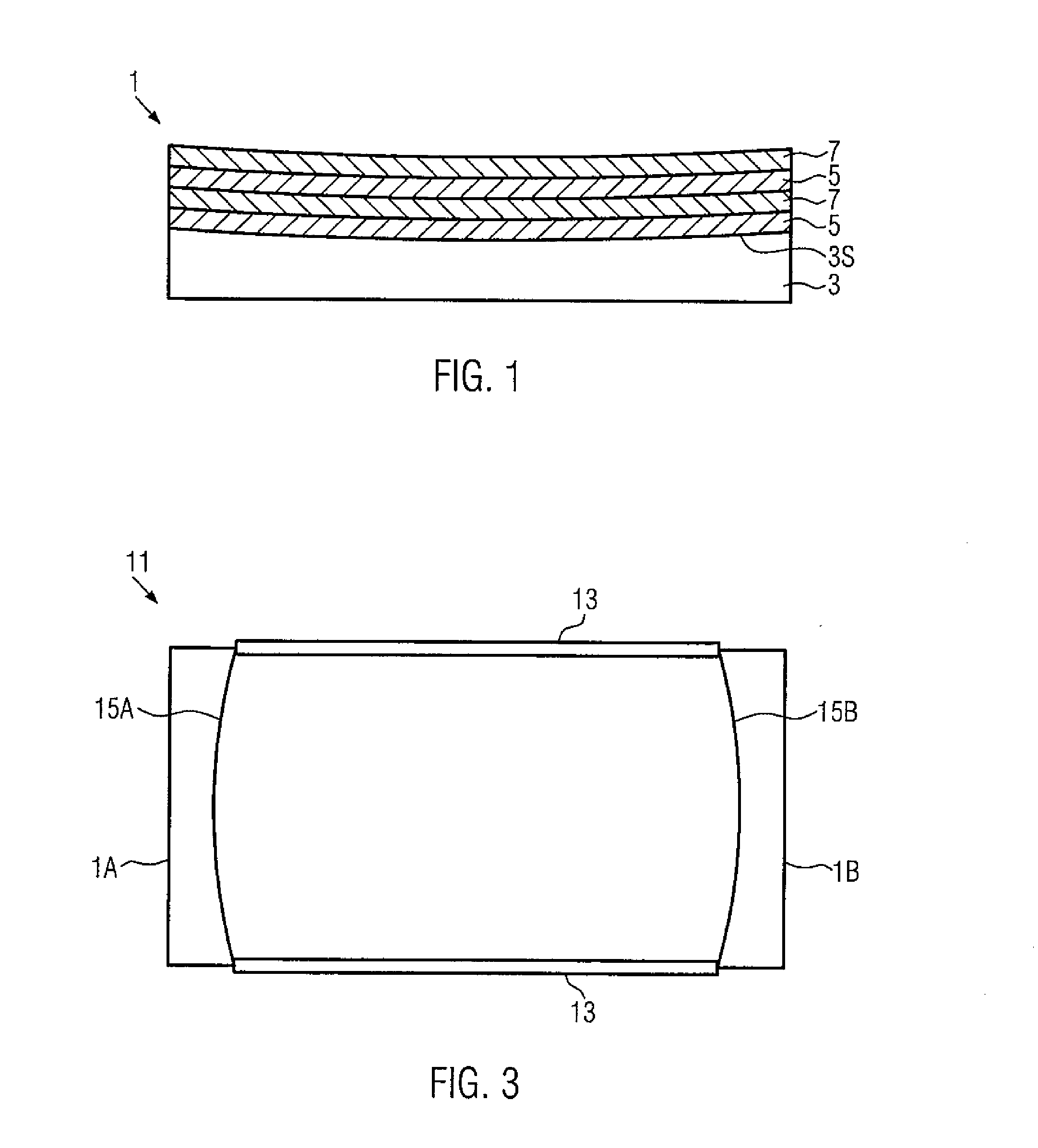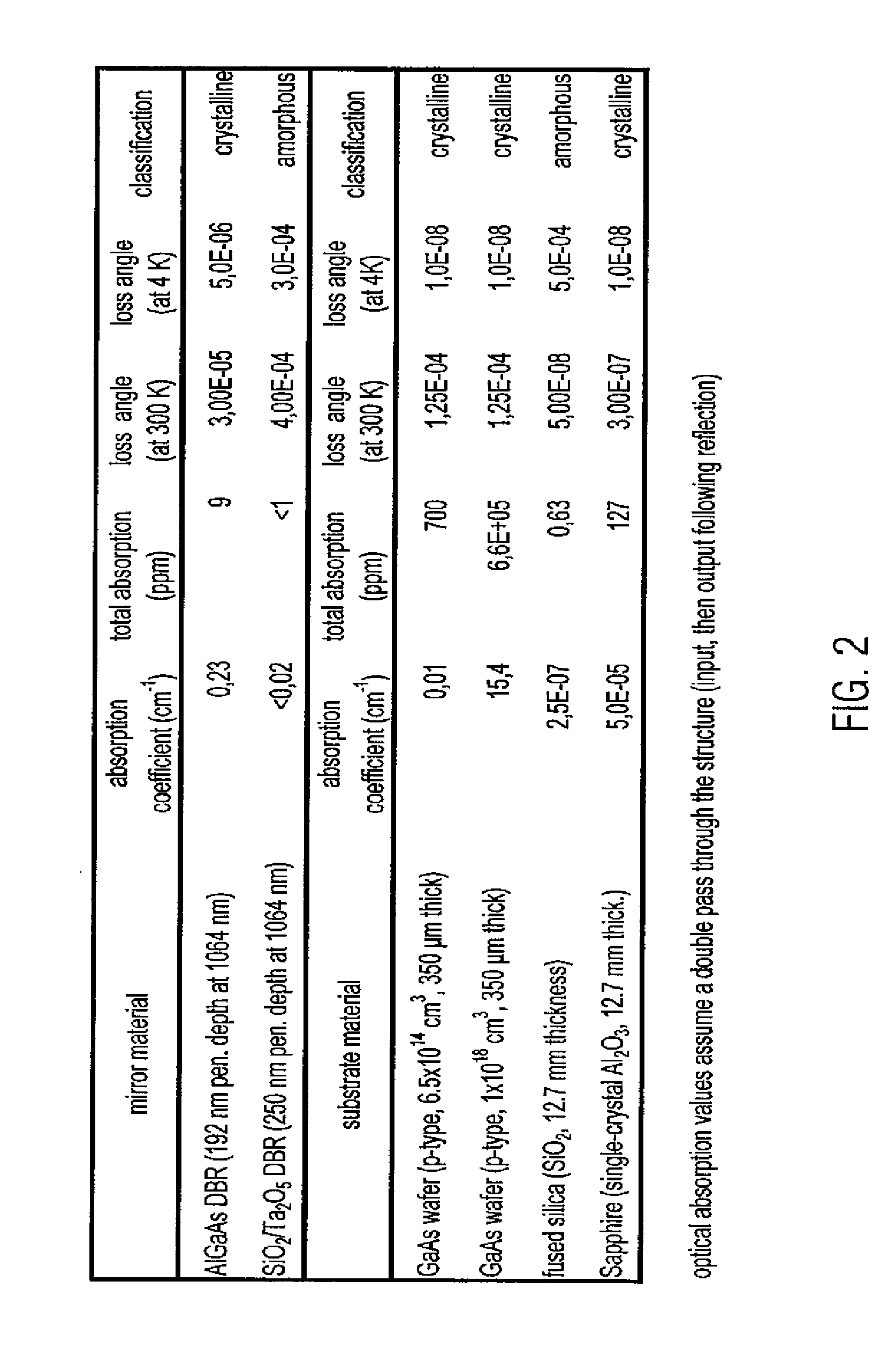Substrate Transferred Monocrystalline Bragg Mirrors
a monocrystalline bragg mirror and substrate technology, applied in the direction of optics, instruments, optical elements, etc., to achieve the effect of reducing mechanical damping in the mirror materials
- Summary
- Abstract
- Description
- Claims
- Application Information
AI Technical Summary
Benefits of technology
Problems solved by technology
Method used
Image
Examples
Embodiment Construction
[0040]FIG. 1 shows a side view of a low absorption mirror assembly according to the present invention.
[0041]The stack comprises a monocrystalline Bragg mirror bonded to a curved carrier substrate. As described previously, in this application the term monocrystalline refers to a low defect density single-crystal film as can be produced via epitaxial growth techniques, MBE, MOVPE, LPE, etc. In this document crystalline and monocrystalline may be used interchangeably. The mirror assembly 1 of FIG. 1 is only schematically depicted. A curved substrate 3 is provided as the carrier substrate for a stack of monocrystalline layers. The stack 9 of layers 5 and 7 is depicted in a simplification with only four layers, it should be understood, however, that the stack 9 typically comprises many more layers. The maximum reflectivity may be determined by the total number of layers—asymptotically approaching a reflectivity value of 100%. The number of layers for the present example may be about 40 p...
PUM
 Login to View More
Login to View More Abstract
Description
Claims
Application Information
 Login to View More
Login to View More - R&D
- Intellectual Property
- Life Sciences
- Materials
- Tech Scout
- Unparalleled Data Quality
- Higher Quality Content
- 60% Fewer Hallucinations
Browse by: Latest US Patents, China's latest patents, Technical Efficacy Thesaurus, Application Domain, Technology Topic, Popular Technical Reports.
© 2025 PatSnap. All rights reserved.Legal|Privacy policy|Modern Slavery Act Transparency Statement|Sitemap|About US| Contact US: help@patsnap.com



